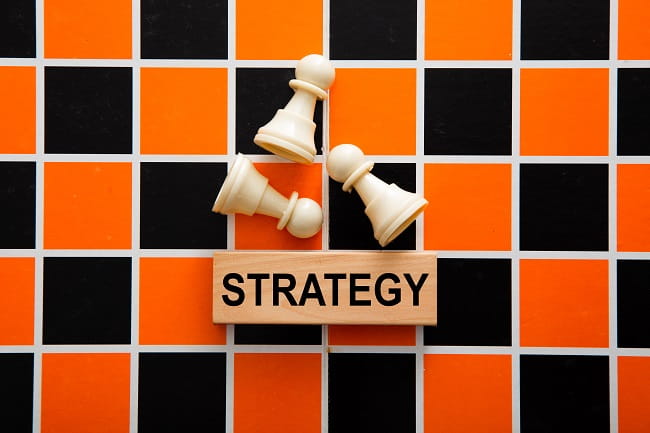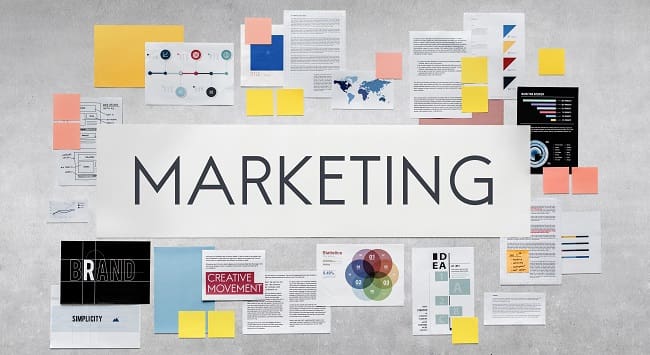Types of Marketing Strategy : 7 Strategies to Boost Your Business
In the evolving landscape of digital marketing, understanding various types of marketing strategy can impact business success. This guide delves into seven types of marketing strategy, traditional and digital, to help reach your audience, build awareness, and drive conversions using optimized types of marketing strategy.
Traditional Types of Marketing Strategy
Understanding the Foundations: The Role of Print Media
Print media such as newspapers, magazines, brochures, and fliers have long been a staple of traditional marketing. While seemingly antiquated in the digital age, print media retains several advantages:
- Builds credibility and brand trust
- Allows for attractive visual designs
- Has a longer shelf life than digital content
However, challenges include limited reach, difficulty measuring ROI, and lack of interactivity. Overall, print media remains an important component of the marketing mix when combined with digital efforts.
Leveraging Broadcast Media
Broadcast media like radio and television provides expansive reach through audio and visual formats. Key advantages include:
- Delivers ad messages to broad, diverse audiences
- Dynamic creative options with sound, motion, etc.
- Drives brand familiarity and awareness
Drawbacks involve significant costs, fleeting messages, and difficulty tracking direct response. Still, broadcast channels should be leveraged to supplement holistic campaigns when budgets allow.
Direct Marketing Techniques : Exploring Direct Mail
Though increasingly outdated, direct mail enables targeted messaging sent straight to customer doorsteps. Benefits include:
- Personalization with variable data
- Tactile, engaging medium stands out
- Measurable response rates
However, direct mail suffers from perceptions as “junk,” limited integration with digital, and higher costs. Overall, this channel can effectively boost multi-channel efforts but requires careful audience segmentation.
Telemarketing: Pros and Cons
Telemarketing allows for real-time engagement with customers via phone calls. When done properly, it can:
- Enable detailed conversations and feedback
- Provide personalized offers/info
- Get immediate response
Unfortunately, most consumers have an unfavorable view of telemarketing calls as disruptive or even harassing. Additionally, the costs per lead can be prohibitively high. As such, the applicability of telemarketing is limited without proper targeting and practices.
Digital Marketing Strategies : Embracing the Digital Shift
The Power of Search Engine Optimization (SEO)
SEO represents the process of optimizing web content to drive higher organic visibility and traffic from search engines like Google. Distinct benefits include:
- Cost-effective source of targeted leads
- Drives growth in awareness and conversions
- Encourages user trust in brands
However, mastering SEO best practices involves significant technical expertise and time investments. Overall, brands must develop thoughtful SEO foundations to maintain competitive visibility online.
Harnessing the Potential of Pay-Per-Click (PPC) Advertising
PPC advertising refers to paid ads delivered alongside organic search engine results, like Google Ads. Key upsides:
- Precisely targeted to relevant keywords
- Rapid campaign launches with flexible budgets
- Clear metrics on costs and conversions
However, ad blindness is increasingly common, and PPC bids can be cost prohibitive for locating high volume keywords. When applied strategically though, PPC represents an efficient driver of qualified website traffic and conversions.
Engaging through Content Marketing : Crafting Compelling Blog Posts
Company blogs provide avenues for owning niche conversations and nurturing customer relationships over time through storytelling. Tactical wins include:
- Boosts website stickiness and time-on-site
- Improves brand perception as an industry thought leader
- Enables SEO optimizations with keyword-focused content
Of course, delivering value via blog posts necessitates making reader-centric informational and educational content the focus over ego-centric thought leadership. Overall though, blogging should play a foundational role within any scalable marketing strategy.
Creating Irresistible Video Content
Video content has rapidly emerged as a fixture of digital marketing thanks to visual storytelling that resonates strongly with modern consumers. Advantages include:
- Improves understanding of complex subject matter
- Quickly fosters emotional connections
- Higher conversion rates compared to other mediums
- Easy to distribute and optimize across channels
Potential obstacles cover production resource requirements and platforms with limited video capabilities. However, video marketing is a necessity in today’s evolving digital landscape.
Social Media Marketing Strategies : Navigating the Social Landscape
Building Communities on Social Platforms
Robust branded communities on leading platforms like Facebook and Instagram enable direct conversations while applying peer influence to organically spread brand stories. Key considerations:
- Humanizing the brand and driving emotional connections
- Providing owned channels for customer service issues
- Monitoring conversations and trends among followers
Success necessitates understanding nuanced platform algorithms and culture while delivering tangible value via compelling visuals, videos, and captions. When done properly though, branded social media communities can become powerful catalysts for loyalty and advocacy.

Influencer Marketing : Leveraging Social Authority
Influencer marketing centers on partnerships with prominent social media users boasting significant followers and perceived industry expertise. These collaborations:
- Enable 3rd party validation of products
- Leverage existing follower bases for amplified reach
- Integrate seamlessly into influencer content strategies
Potential difficulties involve identifying the right cost-efficient partnerships and ensuring content aligns authentically with brand messaging. Overall though, influencer campaigns can drive impressive conversions when thoughtfully activated.
Email Marketing Strategies : Maximizing Reach and Engagement
Crafting Effective Email Campaigns
Email newsletters may seem outdated but remain a staple for consistent brand-to-customer communication via owned channels. Practical applications:
- Distributing relevant branded content
- Promoting products, sales, or special offers
- Maintaining an open dialogue channel
Designing compelling email content and segmenting subscriber lists by behaviors/interests is vital to driving opens, clicks, and desired actions while avoiding common pitfalls like oversending. When respectfully executed though, email nurtures relationships and sales.
Personalization and Segmentation Techniques
The most effective email campaigns incorporate personalization and segmentation strategies tailored to diverse subscriber interests. This allows for:
- Improved open and clickthrough rates
- Contextually relevant content
- Optimized family/frequency capping
Patience is required to incrementally build segmentation libraries leveraging insights from past campaign performance. However, the long-term benefits make this a non-negotiable element for email success.

Mobile Marketing Strategies : Targeting Audiences on the Go
Optimizing for Mobile Devices
With growing reliance on smart devices, mobile optimization is mandatory for providing ideal user experiences. Critical components include:
- Responsive website design
- App development with cross-platform accessibility
- Attention to loading speeds and touch navigation
While resource-intensive initially, mobile optimization drives substantial traffic share gains as global consumers shift toward “always on” access from smartphones and tablets. Capturing this market hinges on device-specific UX.
Utilizing SMS Marketing for Direct Communication
SMS text messaging enables straightforward communication to consenting consumers right on their mobile devices. Noteworthy applications include:
- Sharing discounts or exclusive offers
- Event reminders and updates
- Appointment confirmations and updates
Despite nearly universal reach, SMS marketing must focus on value and permission to avoid turning off mobile subscribers with spam. Within bounds though, this direct conduit to mobile users provides opportunities to connect via native experiences.
Leveraging Data Analytics: Informing Strategy and Optimization
Data analytics plays a critical role in modern marketing strategies, offering insights that inform decision-making and drive optimization across all channels. Key advantages include:
- Enhanced Customer Understanding: By analyzing consumer behavior, preferences, and demographics, businesses can tailor their marketing efforts to better meet the needs and desires of their target audience.
- Improved Campaign Performance: Data-driven insights enable marketers to assess the effectiveness of their campaigns, identifying what works and what doesn’t. This allows for real-time adjustments and more efficient allocation of marketing budgets.
- Predictive Analytics: Leveraging historical data to predict future trends and behaviors helps companies stay ahead of the competition, anticipating market shifts and consumer demands.
- Personalization: Data analytics supports the creation of highly personalized marketing experiences, enhancing engagement and conversion rates by delivering relevant content and offers to individual consumers.
Challenges include the need for sophisticated tools and expertise to interpret complex data sets, as well as ensuring compliance with privacy regulations. Despite these hurdles, integrating data analytics into the marketing mix is indispensable for achieving sustainable growth and maintaining a competitive edge.
More about Marketing :
Marketing Strategy: Capitalizing on Growth Opportunities, click here
Influencer Marketing Impact: Analyzing Fashion Nova’s Strategy, click here
E-Commerce Strategy: Data-Driven, click here
Airbnb’s Digital Marketing: Disruptive Advertising Case Study, click here
Constructing Persuasive Marketing Frameworks for Healthcare Services, click here


